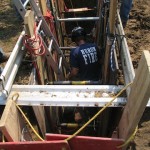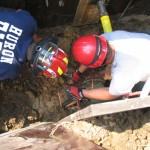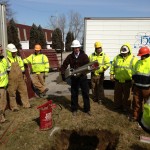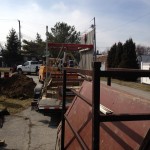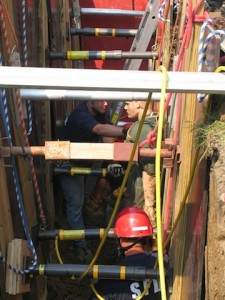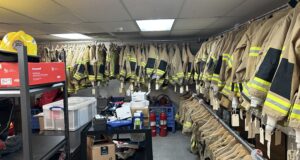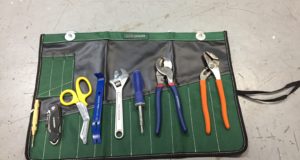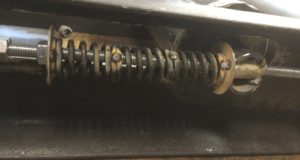A few days ago I had the chance to attend a trench review program for the local water/distribution/street department. The training was taught by Dennis Hobart from Baker Corp. This is not the first time that Dennis has been in the area teaching. Several years back he taught a rescue class for the region USAR team and continues to be a knowledge and equipment resource for our area.
The morning program really talked about many of the awareness level objectives that stress competent person decision making in the trench environment. If you have never had any trench or excavation training below is a list of items to review. Many may seem to commonsense, but none the less important so you don’t become a victim. It is not all inclusive and you shouldn’t just jump into the trench without much more training.
“LIKE” FIRST DUE TACKLE ON FACEBOOK
- Is the site exposed to vehicular traffic?
- Have above and below ground structures been located and identified?
- Are powerlines a hazard?
- Is the spoil pile greater than 2′ from excavation.
- Identify the soil type. Is water, vibration, or previously excavated soil a factor?
- Excavations greater than 5′ deep need shoring per OSHA. Any excavation less that 5′ must be no harm to workers if a protective system is not used.
- Is there a reason to monitor the atmosphere in the excavation.
- Is the proper means of egress in place from the excavation, i.e. ladder, ramps, stairways?
- Are the excavation edges marked and easily seen by workers
Trench rescue is a very technical operation and you should never underestimate the weight and power of dirt. You can google search for numerous trench fatalities and injuries across the country. All of our fire departments should have a plan in place should we be called for a trench related incident. If you don’t have the equipment; does your local service department have any, private contractors, what about neighboring departments or specialized region teams. My intent is not to get all EMS, but time is tissue, brain cells, and cardiac dysrhythmias in the crush syndrome chapter. Identify now and get your response plan together.
Pass it on!
 First Due Tackle Pass It On – Firefighter, Rescue & Extrication Training
First Due Tackle Pass It On – Firefighter, Rescue & Extrication Training
